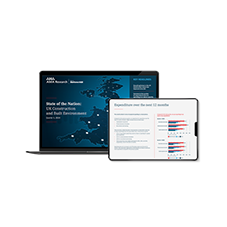''Testing for a safer future'' report highlights product traceability as key to improved building standards.
Author: Dan Rossiter FCIAT, Sector Lead (Built Environment Digital Transformation) at BSI
A new government report has called for the introduction of a consistent labelling and traceability system to improve the way products used in the built environment sector are marketed pre-installation. ‘Testing for a Safer Future: An Independent Review of the Construction Product Testing Regime’ outlines 20 detailed recommendations as part of a review of the whole system of construction product regulation.
One of the report’s key proposals is for the development of a framework that will deliver a consistent product labelling and traceability system. Within, it cites BSI Identify as an example of a system that facilitates such an outcome by providing a ‘persistent means of tracking a uniquely identified product through its lifecycle’. So, how else does BSI Identify address the review’s proposals for greater clarity in respect of a product’s composition and performance to increase building quality and safety?
Testing for a Safer Future (Morrell Review) has been published by the Department of Levelling Up, Housing & Communities. Written by former government construction advisor Paul Morrell OBE, and energy and construction lawyer Anneliese Day KC, the review is in response to the Grenfell Tower Inquiry, which noted a failure by manufacturers to disclose information relevant to a product and its assessment, as among the reasons for the 2017 fire.
However, it cannot be assumed that issues cited in the Grenfell inquiry are unique to the tower’s faulty refurbishment. Indeed, in her post-Grenfell review of building regulations and fire safety, Dame Judith Hackitt noted a shortfall in standards throughout the sector, and thus proposed ‘stronger requirements for the testing, labelling and traceability of products that are critical to safety’.
Reliable lines of communication
With Dame Judith’s recommendations informing much of the government’s Building Safety Act which is due to be implemented in full later this year, the calls for greater clarity in respect of product identity and performance continue to grow. For example, the Morrell review speaks of a need for three reliable lines of communication once a product leaves its point of manufacture. This is stated as being important to:
- Access to product information
- Information to trace a product (for purposes such as recall)
- Tracing a product (thus ensuring it is installed in the form that it left the factory)
BSI Identify’s persistence product registry and its Universal Persistent Identification Number (UPIN) for products unlocks essential information, allowing the supply chain, asset managers and end users to quickly retrieve details such as accreditations, data sheets and user guides through their mobile phones or laptops.
Therefore, whether you're an engineer inspecting a high-rise building or a subcontractor responsible for installing a façade system, having UPIN-enabled products or materials provides immediate access to crucial information. This helps to ensure that specified products are the products being installed, thereby negating instances of ‘swapping out’ for cheaper, inferior products.
Labelling and traceability
Another significant aspect of the Morrell review is its recommendation for the development of a framework standard to improve product labelling and traceability. In terms of what the standard should include, the review recommends unique identifiers, registration characteristics, and good practices relating to the way labels are attached and accompany products. Moreover, the review proposes a minimum amount of product information should be captured and made accessible via a link such as a barcode or QR code.
On account of its continuous tracking capability, the Morrell review highlights BSI Identify as an example of how traceability and labelling issues can be overcome throughout a product’s lifespan. A product containing BSI Identify’s unique, networked identifier allows specifiers and installers immediate, universal access to product information. BSI Identify can also capture other product ID systems such as Global Trade Item Number (GTIN).
In respect of registration characteristics, BSI Identify is based on DOI registration. Meaning that even if a product is no longer being manufactured, BSI Identify’s robust, reliable and scalable capability ensures its information will endure. Moreover, the Identify system is able to provide a digital or physical data link via its UPIN, thereby responding to the Morrell review’s call for a minimum amount of product information to be captured and made accessible via a link such as a barcode or QR code.
Welcome recommendations
Of the other significant proposals contained within the Testing for a Safer Future review, BSI welcomes the recommendation for the introduction of a standard for product labelling. Once established, BSI Identify will undertake any alignment required to ensure conformance. Our support is also fulsome in respect of the report’s proposal for production information to be implemented as part of Dame Judith Hackitt’s ‘golden thread’ of information that is accessible to the supply chain. Again, we will consider how BSI Identity’s UPIN can be adapted to best accommodate this additional information.
Overall, the recommendations made throughout the Testing for a Safer Future should be considered extremely carefully by stakeholders across the built environment sector. As an organisation committed to innovating solutions that inspire excellence and improve building good practice, BSI is ready to align BSI Identify to ensure its full conformance with the proposed framework standard, should it be realised.
Related Blog Articles



crop192.png)












